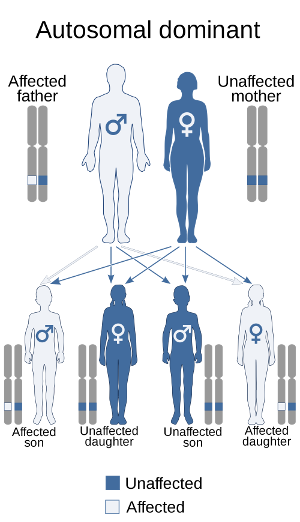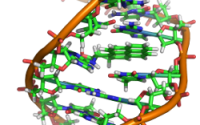What is Normal

I know, “what is normal” is a really loaded question or statement, but I’m not intending it to be. My normal is not yours, nor theirs, nor anyone else’s. We all truly have our own “normal”.
I’m just trying to help distinguish between the majority who are not hypermobile, and those of us who are, but may not realize we are, nor what all that entails.
[Edited to add in December 2021: I have since come to realize that “typical” might be a better word than “normal” which is a loaded judgmental word, and implies something wrong, broken or diseased or inadequate etc about anyone who isn’t “normal”. Which we are not. I may change the post title one of these days, accordingly. ]
Since we tend to be attracted to each others both platonically and romantically, those of us who are a bit ore more “bendy” have “normalized” the milder manifestations of at least the most common and currently so-called Hypermobile form of Ehlers-Danlos Syndrome (hEDS) all these years as I write this in December 2016.
Update March 2017: I obviously now include all the newly recognized and described forms of the new diagnosis of Hypermobility Spectrum Disorders that were just “invented” by the International Working Group on Hypermobile Ehlers-Danlos Syndrome as announced by the Ehlers-Danlos Society on March 15, 2017 along with the new EDS nosology (first in 20 years.)
This category is meant to catch all those not quite bendy/symptomatic enough to fit the newly tightened hEDS (hypermobile EDS) criteria now. (And/or in those who are very bendy, don’t have enough “issues with their tissuse” to tick enough boxes to be diagnosed with hEDS now.) <end update>
Other types may experience these things too, but are usually much more easily diagnosed due to grosser issues earlier on in life. I.e, what are things you experience with milder often undiagnosed hEDS or the new (as of March 2017) Hypermobility Spectrum Disorders besides the increasingly common fibromyalgia that the majority with “normal” or better aligned collagen do not?
The most obvious all these years is our gross flexibility, usually, lending to extreme bendiness and some contortionist talent. Yes, I highly suspect the lovely Sophie Dossi from the 2016 season of America’s Got Talent, among others. She is very hypermobile at a minimum, mistakenly taken by most doctors to mean just flexible, hopefully nothing more. (EDS = hypermobility plus medical issues. Some people are still believed to just be hypermobile by experts still.) Along with anyone else who is “double-jointed”, meaning you can sublux your joints at will, not that you have two joints.
NB Others can still have joint instability and other EDS signs despite not being flexible. That is, despite the majority with hEDS exhibiting great flexibility, not all will, but can still injure very easily and have soft inner tissues that rupture or tear still. Learn more here.
Popping your thumb or a hip out and back in easily is an example of a joint subluxation. It’s called a full dislocation when you can’t get it back in easily. Don’t play with your joints! One day it may not go back in, seriously! (Speaking from experience, ahem.)
 Although this post will smack of my When Else to Suspect EDS list, it’s slightly altered with a mildly different focus on things we may not realize aren’t common to the majority of the world around us. This is likely because we are surrounded by like minded and bodied people in both our families, and among our friends – many of us find we are highly attracted to each other platonically and romantically.
Although this post will smack of my When Else to Suspect EDS list, it’s slightly altered with a mildly different focus on things we may not realize aren’t common to the majority of the world around us. This is likely because we are surrounded by like minded and bodied people in both our families, and among our friends – many of us find we are highly attracted to each other platonically and romantically.
Whence our kids often get diagnosed first, they pull the “short straw” and get it from both sides, right?
But don’t stop mating, just be mindful as you do – I believe with improved nutrition and medical support, we truly can have improved quality of life so that it’s not a burden for anyone. Just lower your inflammation, boost your nutrition and detox your lifestyle as much as possible pre-conception for the best outcome for all. We are an incredibly gifted bunch, some call “twice exceptional”.
But I digress…
Some other common “party tricks” we “zebroids” often enjoy:
- reverse Namaskar sign ability (can put arms in “prayer post” behind your back)
- Gorlin sign – can touch your tongue to tip of your nose
- ability to flip your eyelids inside out easily
- very flexible ears
- great gymnastic or contortionist ability (can do the splits easily)
- stand on the sides of your feet
- “W-sitting” (don’t do it!)
- Double crossed or “twined” legs when sitting in a chair
Other things that are common for us, but not “normal” for the majority of the human population include:
- Weakness or being prone to more injury on one side of the body especially, not necessarily your dominant side either
- Piezogenic papules (isn’t that a great word?) or “fat papules” on your heels (Update 2018: this is common.)
- Highly visible flaccid bulging veins in hands and feet that “balloon” out (fill) with gravity or high BP / temp but conversely will recede/disappear (empty) quickly upon raising limb over head
- “Sock prints” and red or dark indentations from any elastic bands or sleeping on any kind of a crease or elastic. This is from our soft tissues and often over-active mast cells in our skin lending to mild dermatographism.
- Ironically, despite injuring easily and scarring badly, we tend to have really soft, super young looking faces and facial skin, making us look on average 10 years younger than our chronological age.
- Running much hotter or colder than others on average (usually colder)
- Trouble falling and staying asleep (many reasons, including ADHD and pain and hyperadrenergia and histadelia)
- No filter – trouble with interrupting others a lot (look into ADD/ADHD)
- Sensitivity to vibration, sunlight, temperatures (hot or cold), stress (see MCAD)
- Some can injure easily without significant pain to warn them it’s happening. (Conversely, others of us gasp like a fish in pain at the slightest touch alas. Neither extreme is good.)
- Blue tinged sclerae (a bluish tint or appearance to the “whites” of your eyes)
- Highly sensitive INFJ personality and senses, score high on HSP scale
- Lots of esoteric, “out of the ordinary” experiences, ESP, telepathy, psychic ability, or may identify as Indigo Children
- Tendency to carry an electric charge and “blow” surrounding electronics and light bulbs. Also experience static shocks easily in winter, or almost any time. (Use vacuums carefully, they tend to build up static in us. Try to grab a desk, chair or other piece of metal before grabbing your phone or laptop to “discharge” this first and save your gadgets. Also try to eat lots of veggies or drink alkaline water to balance your acidity which lends to this.)
There are more, but I’m just throwing these out off of the top of my head this afternoon. I’ll try to add to and flesh out this post a bit later in time as things bubble up. I was just inspired to share this after a great conversation about one side of our bodies often being weaker for some of my Twitter followers today. (This was a revelation for some.) It prompted me to think “what else don’t people realize is attributable to hEDS?” And voila, this post. (Welcome new followers here and there!)
No, not everyone will experience all of the above. That is never the case. (Boy are we a highly black and white thinking bunch!) Just as no solution will work for everyone either, it’s as individual as fingerprints. These are just some common themes I see crop up in the very large online support groups (over 20,000 on Inspire now) periodically.
Finally, I complete a post before midnight! Mark it on the calendar.
TTFN,
Jandroid last updated December 7, 2021



I really like the new catch-all phrase: Hypermobility Spectrum. It’s true, no two cases of EDS or HEDS are exactly alike. I am not as bendy as the classic type 3 EDS, and I have some type 1 symptoms ( fragile skin in my mouth that tears and bleeds easily). I am an HSP/ INFP ; and who has injured both knees with permanent damage; also both shoulders (I could disjoint them, as a kid); my feet and ankles are such a loose, weak nightmare that my orthopedic therapist called his colleague over to see what a wonder it was that I could even walk. This runs in my family along with what I believe is comorbid von Willebrands Disease ( we are bruisers and bleeders ).
Fortunately, I don’t have POTS….but have had chronic poor stamina and have been prone to adrenal fatigue my entire life. And yes, I flush red at the drop of a hat. People, strangers in public come up and ask me if I’m okay….I am beet red from stress or exertion but otherwise, okay. Oh, and restless legs in bed at night….and arms that flail as I drift off to sleep.
I could go on ( mild Asperger’s syndrome, ADD, etc). I guess we EDSers are like an alphabet soup of funky genes. Maybe I should start a blog about the lighter side of of being a genetic mutant and call it: “Do These Genes Make My Aspergers Look Big?”
LOL – love it! “Do These Genes Make My Aspergers Look Big?” – that’s brilliant – go for it! I’m glad you are also able to find some humor in this lousy constellation of issues we “enjoy” – like, some mad doctor threw a bunch of diagnostic spaghetti against the wall and waited to see what stuck. (Apparently it was well cooked, cuz a lot is sticking for our lose.)
Thanks for sharing your “normal”. And oh yeah, that darn flushing red gets me every time… sigh. Cheers, Jandroid
Good Morning to you Jandroid & Jeanne! I just saw this was dated over a year ago, but I just discovered it today. Things are supposed to happen when needed. I truly have tons of questions. I shall start with two. Where might I find a picture of W sitting Before I create a scene with his mum about it. If it’s what I’m thinking, my 4 yr old grandson sits this way all the time. Second, can you help me with info about face flushing/redness? My son has it the worst of all of us. From nursery school through university I had to write note explaining his red face was ‘normal’ – for him – Were told by pediatrician it was called dermatographism?!??
I look forward to reading more & educating myself.
Hi Susan, I get comments on even older posts all the time, no worries! Glad you found this post and comments useful. Here’s one sample of W-sitting. Unfortunately, they don’t mention the real reason kids do W-sit: because they are hypermobile enough to be able to do so, and it’s often comfortable for the most hypermobile ones.
https://www.childsplaytherapycenter.com/w-sitting-correct/
But as the article alludes, it can lend to problems later. And, as an aging (and steadily stiffening zebra – that is, semi-rare hypermobile spectrum patient), I would advise against it. I think it leaves them prone to popping their hips out later. I wouldn’t jump on them (or mom) too hard or fast about it though – just slowly help the family and child notice and be aware of how often they do it. And gently get them to change position after a minute or two. I think it’s better to help the child themselves become slowly more mindful of their body in space, and not be thought of us bad – they’re just doing what comes naturally to them.
And yes, that flushing is very possibly from high histamine levels which drive dermatographism. If he is hypermobile as I suspect, we find MCAD (all forms) is fairly comorbid (comes with it a lot) as I describe here:
http://ohtwist.com/what-is-mcad/when-to-suspect-mcad
This would then lend to that higher baseline histamine level if that’s the case.
Try to notice if he has sudden mood swings or cognitive changes after eating certain foods, especially red or orange dyes (try to avoid all dyes but especially those – we seem especially sensitive to those for some reason), or has stomach aches or changes in bowel habits on say gluten and dairy vs off if you can. Or reacts badly to alcohol. (Again, mood swings or really bad headaches, e.g.) I know it’s not easy getting kids to eat proscribed diets, but it can make a world of difference. Aim for as much organic whole foods as possible, vs instant boxed foods to which you may just add water and heat for example. And as little sugar as possible! (Not easy in our sugar-saturated society I know. Even for adults!)
Yes, this is time consuming – and partly why I can’t work much: cooking and eating this way takes a huge chunk of my time. (I’m slowly working up to getting an Instapot for this reason.) Best of luck to your family. And be ready for blowback from both some family and doctors who may not readily grasp these signs and conditions, or be in denial about their own signs and symptoms. Think marathon, not sprint. And scour the rest of my site (see the menu) for more.
No need to get other-worldly here. The key factor in generation of pain and dysautonomias is gravity. Upright posture in an hyper-mobile persons begets a functional scoliosis and a tilted body tower, with wide ranging muscle spasms attempting to keep the body contraption upright. Osseous subluxations cause autonomic neural tract impingements that dysregulate organ functions. Pelvic girdle laxity from multiple childbirth engenders a tilted body tower that strains the muscles of
upright posture and therein arouse widespread muscle spasms, entheses loci of stress, tendon inflammation, and chronic widespread pain. Lying on the sleep surface is painful; causing non-restorative sleep, fibro fog, daytime fatigue, and depression. Concomitant sedentariness and obesity tip the process over the edge. Gravity rules.
Where do you get the ESP information m? I’ve never seen this before. My zebra sees ghosts sometimes
Its’ all just anecdotally so far. But as a group, we seem to be much more “highly sensitive” to energy/energies, more than most. I myself have an incredibly strong intuition that regularly kicks me in the gut when I’m making a wrong turn. And several of my EDS friends have mild psychic abilities.
So no science here yet, sorry, all just anecdotal “woo woo” as some might call it. But every time I mention it I draw out more interesting experiences and stories. (One friend’s girlfriend regularly blew the lights out on one of the bridges here in Portland when she drove across. He didn’t believe her until he drove with her one night over that bridge and boom: sure enough, one by one they all went out!) Can’t make this stuff up…(Well, you can, but I’m not, smile.) Cheers.
Yes, yes, & yes!
I am a “bendy,” as is my granddaughter. We are both spiritually sensitive. She is 9 and I am 70. I was a teacher and professor of gifted education, and now I work with spiritually sensitive children and adults. I am eager to help parents of kids who are hypermobile and spiritually aware.
Oh how cool! Glad you found “your people” here. 😉 Cheers.
I’m so glad I found this site. It’s been eye opening. For almost 12 years I’ve had increasing chronic pain (primarily joint and nerve pain), but I never got any real answers until recently. When I entered my 40’s things suddenly got a lot worse, but at least that decline finally led to some forward progress.
From late 2018 until now, I’ve been diagnosed with (in order) anxiety, depression, MCAS, POTS, CPTSD, Autism/ADHD/Dyslexia/Dyspraxia, and recently a fun little pair of hernias (just got them fixed). I feel like I’m playing Pokémon with diagnoses here – “gotta catch ‘‘em all!” But up until just a few months ago, I still had no idea what was causing the joint and nerve pain. I’ve been talking more and more with other autistic people online, and anytime I compare notes on chronic pain, I keep getting asked the same question: “do you have EDS?” Well…
The more I dig, particularly on social media and sites like this where people share their lived experiences, particularly describing what things actually feel like, I’m getting more and more certain EDS/HSD is the culprit. Even some of the other issues I haven’t quite nailed down seem to fit the pattern.
I’m currently hunting down the cause of my lifelong GI issues, looking for a good neurologist to address my constellation of funky nerve stuff (including seizures/convulsions, twitching, neuropathies, brachial neuritis, etc,), and I think I’m finally getting somewhere with these achy joints. My hands are rather stiff now and I can’t really remember if they were hyper mobile before, but my hips, shoulders, back, neck and knees are all still bendy, and for the last 10 months I’ve been walking with a cane from what I now realize are repeated subluxations of both knees and an almost constant feeling of tearing and bruising in my right hip and upper thigh. Reading through the co-occuring conditions here and the “chronic constellation” I think I’ve finally convinced myself that I’ve found the primary cause of most of my chronic pain.
I’m also one of those highly electric people, the kind who constantly blasts everything with static. I’ve popped a few bulbs in my day, but my brother is the pro when it comes to that. He’s also bendy – when we we were younger (he was a teen, I was in grade school) we’d put both our legs behind our heads and hop around the house on our hands. Apparently that’s *not* typical… who knew? My sense of “normal” was based on my family. My dad was a gymnast as a teen (bendy) and then dislocated joints frequently in adulthood and had ganglion cysts all the time. We’ve all had GI issues, and “super allergies” (MCAD). None of the atypical things in my life seemed that odd when there was always at least one other person in the family with the same traits. It’s all starting to come together…
I want to thank the authors here who have put together so many detailed resources, and the commenters who have shared their experiences. Much like my Autism diagnosis, I never saw my experience in the language used in medical texts, but with lived experiences, things have resonated. Without people sharing their experiences, I’d still be floundering.
Dear Matthias, comments like yours help keep me going. I am the “authors” here. 😉 But I also appreciate all the comments too, as that shared experience really helps to validate our own, indeed. So glad you found my site, and seem to have found “your people”. I trust you’ve also seen my “When Else to SUspect EDS” page here too, but in case not:
https://ohtwist.com/when-else-to-suspect-ehlers-danlos-syndrome
Just to help confirm all your suspicions. And this page is great for when you feel ready to get diagnosed – it can help you prepare to approach your doctor(s):
https://ohtwist.com/about-eds/diagnosing-eds
I know some folks are adopted, and most of us have really dysfunctional families even if not, so it’s hard to gather much family medical history. But I strongly urge doing so, splatting out (listing) ALL the family medical issues (including mental health) down the left side of a spreadsheet (table), the family members across the top (including you) – by each side. E.g. do one table for mom’s side, one table for dad’s (if can – I could only do my dad’s side though I later recognized MANY signs in my late mom). Including yourself both times. And then start checking off the boxes beneath their names for who has/had what. (It sounds like you have some family info already with your brother and dad.) It’s okay if it’s not complete – you don’t need medical records or anything. Just anecdotal information. You can even use laymen’s terms for the conditions (if they call all their joint pain arthritis, that’s fine). The point is, you will soon see who all “leads the pack” in terms of being affected (affliced) with issues, clearly relating to a systemic connective tissue disorder.
E.g. me, my dad and my aunt Kathleen all “led the pack” on the Groh (dad’s) side of my family. But everyone had SOME issues in common, like being near-sighted – some extremely so. My sister has many signs of a CTD, but she’s so much milder than I that she is in denial and just thinks I’m a wimp and she’s totally unaffected. (I noticed both my narcissistic dad and sister both denied my lived experienced my whole life when I would bring something up/complain. If they didn’t mind, it didn’t matter, sigh.)
Anyway, point being, it can lend a ton of insight for both you and your doctor. My geneticist was tickled when I brought out a (very incomplete but still informative) print out for my family. You can see a sample in the linked page above. (Read closely, it’s there.) You can use Google docs to create one too – you don’t have to have MS Excel.
Anyway, that’s why I write posts like these, to sort of bait the hook and hope to help folks like you see themselves in this condition (or vice versa!) as you have. Welcome to the Great Clan Dumpty – where no one can put us back together again, or not very easily! Cheers.
Thanks for your response Jandroid, I just recently talked to my primary care and I have a referral for PT and an orthopaedist. I think I have found one in my area that is EDS literate, so fingers crossed I will get some answers.
I’ve read both of the linked pages a few times now, and am planning to print them out to bring to doctor’s appointments. I still need to reach out to my brothers and my cousin to compare notes on our parents and to see if they have similar symptoms, but plan to do so before seeing the orthopaedist. I’m hopeful that if I receive a diagnosis I might be able to help my brother pursue one as well, as I strongly suspect he is hyper mobile based on his history of knee and ankle injuries. He also has the kind of severe and “random” allergies that I have and I suspect he may have MCAS.
Speaking of MCAS, I had a new MCAS symptom show up during a recent unrelated medical procedure when one of the nurses asked if I got hives from stress (I was anxious as always, HR was 125 which is pretty mild actually) because apparently my back was covered in hives. I seem to have an uncanny ability to shock nurses. I also keep presenting with more and more obvious signs of MCAS that I hadn’t noticed before, which concerns me as it may be getting more serious.
Hopefully within the next few months I’ll have some answers and a treatment plan to help me manage everything. I’ll pop back on with an update once I do.
Thanks again for your help!
Ah so glad to hear that about your referrals, and starting to connect the dots with your family! And I’m not surprised at your MCAS reactions – which yes, can and do seem to worsen with age for many of us for whatever reason. (Almost like the little buggers get even jumpier with every reaction.) This will only help you to get that diagnosed too (one of the tougher diagnoses I need to write about too).
Anyway, glad to hear, and good luck going forward – Jan.
Omg, everything here from the blowing light buns, gastrointestinal issues, early bendyness, dislocating joints all the time, attraction to other people with the same symptoms, psychic ability etc is like a roadmap of like a roadmap of me. I’ve recently been diagnosed as possible aspergergers through my sons diagnosis. I had PROM with 2 of my pregnancies and have very visible veins, as does one of my sons, gingivitial thinning and teeth with long roots. I have hashimotos disease and and lots of anxiety, depression PTSD diagnosis. All with familial history. All possible indicators of veds. Pending genetical testing but the proof might be in the pudding! So much more I could say I hope the answers are in my genes! ,
So glad to help you feel less alone in your experience, and diagnostic journey. Good luck getting some final answers! Definitely check out this page for some guidance and gather as much family history as you can if you can to help with that process:
https://ohtwist.com/about-eds/diagnosing-eds
Great Blog!!
Phinity Therapy offers a comprehensive range of therapy services to address a wide array of mental health concerns.